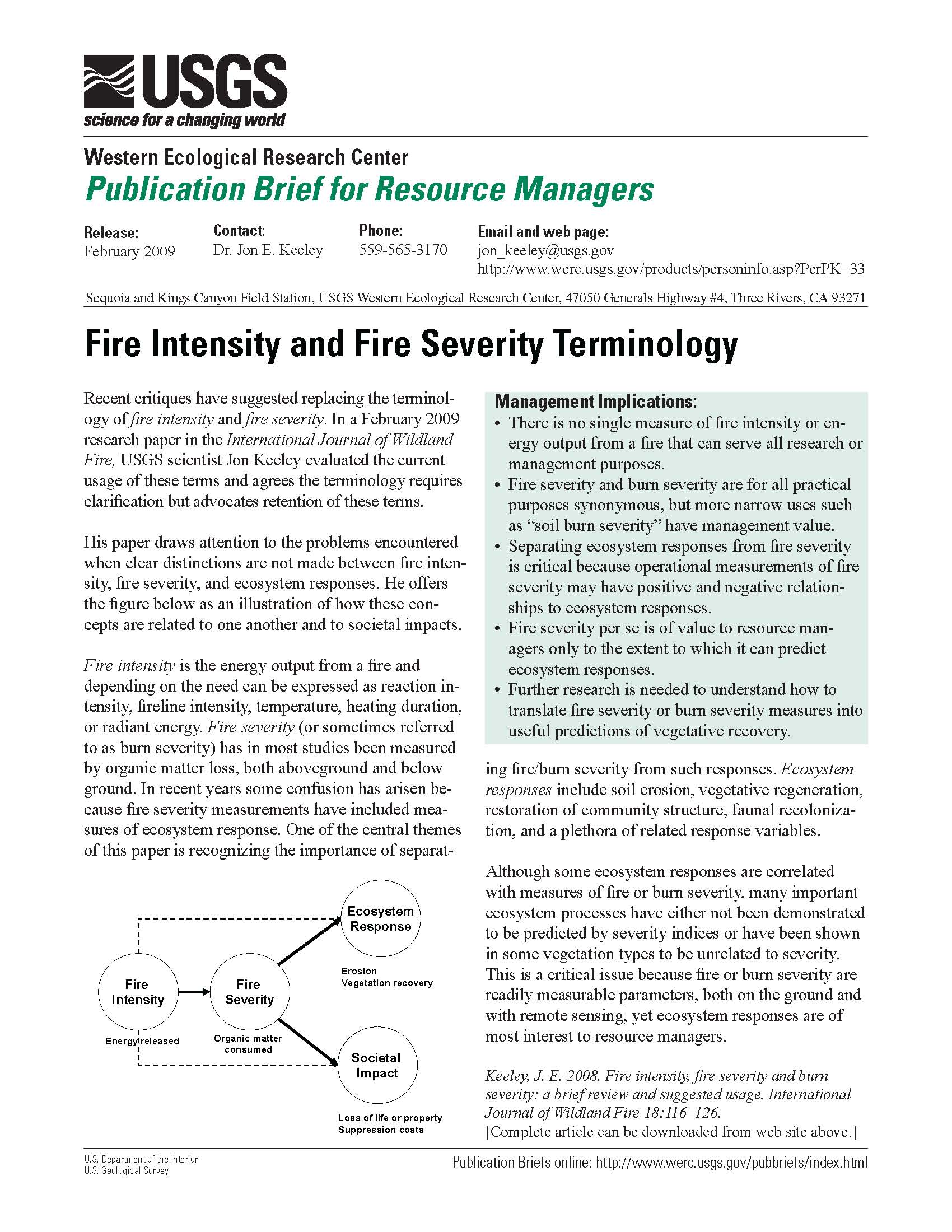- Home
- About S&T
- Taxa/Organisms
- Ecosystems
- Issues
- Methods & Tools
- Reports & Publications
- Location
- Search
2009 | Publisher: USGS | Format: URL
pubs.usgs.gov — Beulah Reservoir on the north fork of the Malheur River in northeastern Oregon provides irrigation water to nearby farms and ranches and supports an adfluvial population of bull trout (Salvelinus confluentus), which are listed as threatened under the Endangered Species Act. Water management in Beulah Reservoir results in seasonal and annual More...

November 2008 | Publisher: USGS | Science Center: Western Ecological Research Center (WERC, Sacramento) | Format: URL
www.werc.usgs.gov — Species distribution models are widely used, at multiple scales, to predict the geographical distribution of habitat suitability or species occurrence. Several studies have found that more accurate predictive models of species occurrences can be developed for rarer species. One recent study, however, found the relationship between range size and More...

2008 | Publisher: USGS | Science Center: Western Ecological Research Center (WERC, Sacramento) | Format: URL
www.werc.usgs.gov — Recent critiques have suggested replacing the terminology of fire intensity and fire severity. In a February 2009 research paper in the International Journal of Wildland Fire, USGS scientist Jon Keeley evaluated the current usage of these terms and draws attention to the problems encountered when clear distinctions are not made between fire More...

September 10 2007 | Publisher: Other (Columbia Basin Fish and Wildlife Authority) | Format: .DOC
www.pnamp.org — This report is from a collaboration between scientists Jeff Uebel, (USFS), Sam Chan (OSU Sea Grant Extension), Scott Weidemer (OSU Sea Grant Extension), and Tania Siemens (Invasive Species Ecologist and OSU Research Associate), who met to strategize the development of an Aquatic Invasive Species Early Detection and Reporting (EDR) System for the More...

2007 | Publisher: USGS | Format: .PDF
pubs.usgs.gov — Ospreys are large fish-eating birds of prey that live along seacoasts, lakes, and rivers. Three times since 1977, USGS zoologist Chuck Henny has led an international team to survey ospreys and other water birds that nest in northwestern Mexico. This USGS report details the long-term dataset and estimates on regional population trends.

2007 | Publisher: USGS | Science Center: Fort Collins Science Center (FORT, Ft. Collins) | Format: URL
www.fort.usgs.gov — This report, extracted from the FORT annual report submitted to the Central Region, contains selected science highlights from 2007 along with products, presentations, awards, and all the internal management pieces. This Open-File Report is a condensed version of the regional submission and includes science accomplishments, major workshops, More...

2007 | Publisher: USGS (Colorado Plateau Research Station) | Science Center: USGS Other | Format: .PDF
pubs.usgs.gov — The Southwestern Willow Flycatcher (Empidonax traillii extimus) is an endangered bird that breeds only in dense riparian habitats in six southwestern states (southern California, extreme southern Nevada, southern Utah, southwestern Colorado, Arizona, and New Mexico). Since 1993, hundreds of Southwestern Willow Flycatcher surveys have been More...

2006 | Publisher: Other (Springer) | Format: URL
www.springer.com — Monitors of Organic Chemicals in the Environment, written by two CERC scientists (Jim Huckins and Jim Petty) and a collaborator from The Netherlands (Kees Booij). Twenty years ago, scientists at the Columbia Environmental Research Center began developing a diffusion membrane to aid in isolating contaminants from fish tissue, which ultimately led More...

2005 | Publisher: USGS | Format: URL
biology.usgs.gov — Laysan ducks are among the last native waterfowl species of Hawaii. Conservation strategies based solely on protecting Laysan Island are risky as natural events such as hurricanes and droughts may eliminate the species. In this fact sheet, learn why and how USGS and USFWS translocated endangered Laysan ducks (Anas laysanensis) from Laysan Island More...

2005 | Publisher: Academic Institution (University of Vermont) | Format: URL
www.uvm.edu — This book examines the latest methods in analyzing presence/absence data surveys. The authors discuss the practical sampling situation, present a likelihood-based model enabling direct estimation of the occupancy-related parameters while allowing for imperfect detectability, and make recommendations for designing studies using these models. The More...

Publisher: USGS | Science Center: National Wetlands Research Center (NWRC, Lafayette) | Format: URL
www.nwrc.usgs.gov — This report is a comprehensive summary of the status and trends of our nation's biological resources. The report describes the major processes and factors affecting biological resources, and it treats regional status and trends. Authors of the chapters and boxes in this two-volume report were drawn from federal and state agencies, universities, More...

Publisher: USGS | Science Center: Pacific Island Ecosystems Research Center (PIERC, Honolulu) | Format: URL
biology.usgs.gov — Preliminary field data of 1998 and 1999 about the ecology of the endangered Laysan duck (Anas laysanensis). The data about foraging habits, habitat characteristics, and population status was gathered to support translocation recovery efforts in Hawaii.
